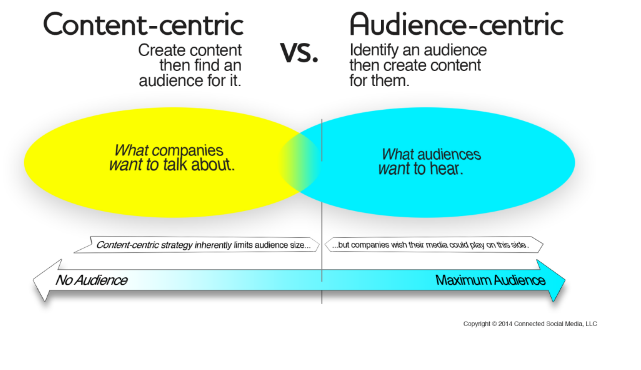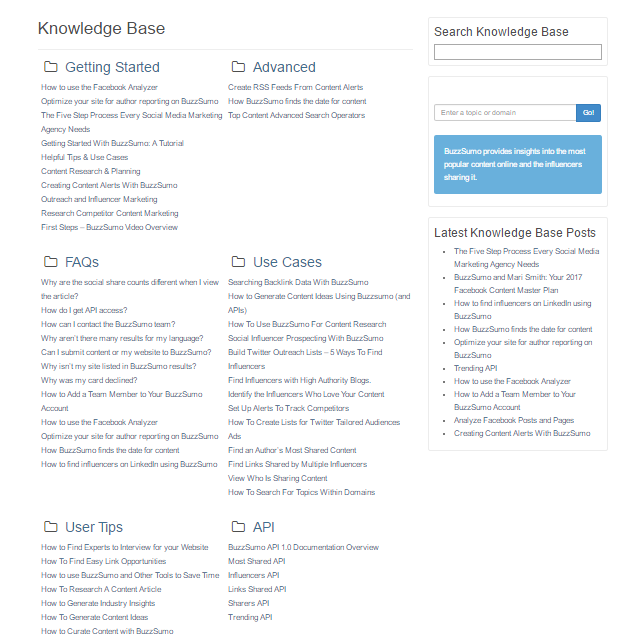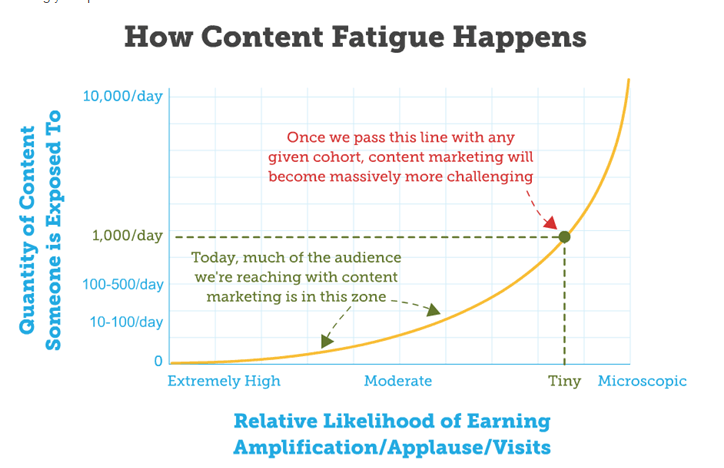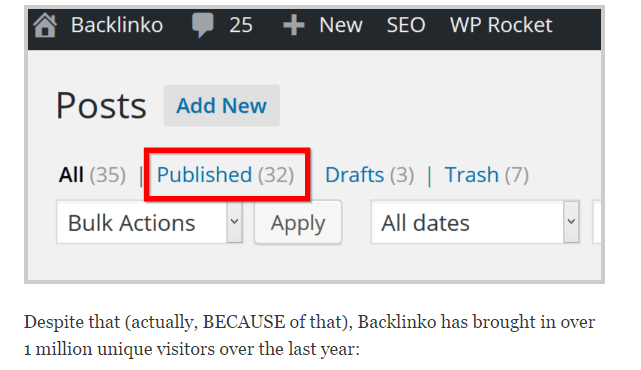Priyanka Desai 5 Outdated Content Marketing Strategies You Should Discard Right Now … Wow-Score collecting now The Wow-Score shows how engaging a blog post is. It is calculated based on the correlation between users’ active reading time, their scrolling speed and the article’s length. Learn more 5 Outdated Content Marketing Strategies You Should Discard Right Now
- 36
- 12
Wait, stop & review. Do not charge a dollar for outdated content marketing strategies. Instead, rethink, & revamp.
Content marketing is an ever-evolving industry, which requires constant updating, refining and modification.
While some pillars of content marketing are fundamental and unchanging, there are many others which zone in and out of relevance.
Chances are, if your content marketing has become stagnant, you might be adopting at least one of the following five strategies discussed below, regularly.
So consider this list as your “jail break” card.
I’ve created this list with the goal to stop you from making the same mistakes many companies are making.
Discard these five outdated content marketing strategies to increase your chances of success by multiple folds.
Your company image, authority and sales will massively improve.
So let’s get started.
5 Outdated Content Marketing Strategies to Avoid
1. Making it all about you
The goal of content marketing is to share useful and relevant content and to build trust with your audience.
For this, your content should be valuable and customer-centric.
As a brand owner, you might be tempted to focus on topics that interest you the most.
However, they might not interest your audience or might not be useful to them.
For example, at the beginning of the year the most common articles, blog posts, whitepapers and infographics are about the industry trends.
If they are not useful to your audience, there’ll be little or zilch effectiveness.
When companies write about what they’re interested in talking about instead of what the audience wants to hear, no one consumes that content.
As you start going further from creating audience centric content, the impact of your content starts decreasing.

When you focus on topics your audience wants to learn more about, your content will appeal to a greater group of people and receive greater engagement.
What Steve Jobs said for technology applies to content as well…
You’ve got to start with the customer experience and work backward to the technology. You can’t start with the technology and try to figure out where you’re going to try to sell it.
— Steve Jobs
For example, on the Knowledge Base section of Buzzsumo, readers can access a collection of resources such as FAQ’s, User Cases, Getting Started, Advanced, User Tips, Reports and API’s.
Their content is actionable and caters to both the new visitors and the repeat visitors.
From webinars hosted with influencers to curating tutorials and creating in-house content, they create content in multiple formats.

Always remember to make it about your audience and not simply about your brand.
2. Sell, Sell and Sell – All the Time
Honestly, the real reason behind painstakingly creating content is to promote your brand, generate leads and convert them into sales.
You don’t do it simply for the sake of doing it.
You obviously want to find results from the time, energy and money you put into the campaign but things can go sour when you concentrate more on selling than informing.
Because the ultimate goal of content marketing is to educate the audience first and sell secondly.
Often times you don’t even mention yourself until the end of the video in the form of a call to action. Your goal is to teach your audience how to solve a problem and reach out to those facing that problem.
For example, if the reader or viewer wants to know how to fix the brakes of his bike, he should do so by the end of the video or article.
When people share this content, you appear to be an expert who gets paid to fix the brake or related services.
When your content becomes overtly “salesy”, it lacks sincerity and authenticity.
People are smart and can see right through it and turns them off.
Nonetheless, this isn’t going to help you build trust or rapport with them.
For example, SmartBlogger teaches how to become a smart blogger and an authority in your field.
Their content educates the reader to become a better writer.
Their resources are valuable and do not push promotional offers straight down the reader’s throat.

Present your product or service as a solution which solves a unique need of your audience.
3. Under doing or over doing SEO
Marketers taut content marketing as the new SEO. In reality, both these strategies overlap in many ways and work best when used together.
Writing great content isn’t enough. You need to get search engines to rank that content.
Technical, on-page and off-page SEO will affect your search engine rankings and are an essential part of a successful content marketing campaign.
Before starting to write on a topic, do the basic keyword research to get an insight into the words and phrases people use when searching for your product or service.
This lets your create content which people are actually looking for.
The importance of SEO cannot be overlooked, owing to the fact that organic search is still the #1 driver of traffic to business sites.
That being said, if you’re still using the term “SEO content”, your focus is more on keywords than on the audience.
While optimizing your content is vital to get high rankings, content marketing is about writing for your audience and not for the search engines.
Instead of stuffing your article with the keywords, focus on coming up with topics related to those keywords that your audience wants to know more about.
Don’t let SEO distract you from creating helpful content. Follow the SEO best practices but don’t resort to keyword stuffing or excessive linking.
4. More content ≠ better content
A lot of marketers assume that creating more content than others gets them the results they want.
Google updates Penguin and Panda have shown us that it in the end “quality wins over quantity”.
Many think that the best strategy is to keep rolling out content and wait for the leads to pour in.
In reality, creating more content is not the answer because throwing too much information at your audience will overwhelm them.
Secondly, when you overexert yourself, the quality of the content goes lower.
Ideally, you’re better off creating one fantastic blog post per week than churning 2-5 mediocre posts every week.
Lastly, as noted by Moz’s Rand Fishkin you might end up suffering from “content fatigue”, a growing condition among marketers.

For example, Brian Dean of Backlinko has published only 32 blogs until now.
His post "Google’s 200 Ranking Factors: The Complete List" earned for him around 250 high quality backlinks and generates more than 15,000 unique visits per month.

Provide your audience with the best possible content by choosing quality over quantity. More content could be detrimental to your business.
5. When your content isn’t great or useful
Irrespective of where you write or who you’re writing for, poor content isn’t received well; not by Google, nor by your audience.
Honestly, having no one read a poor copy is better than having someone read it for the sake of it, making them loose their trust in you.
Your content wouldn’t be of use to anyone.
Why would a reader subscribe to your email list when all you do is copy & paste what your competitors write?
Here’s where the problem lies.
You read about content marketing and its benefits, you decide to do it.
However, you’re under pressure to show results in a short time span, so the next step is, you churn out some blog posts and hope they will work.
But this doesn’t give you the results you want.
Instead of gaining trust, traffic and leads, you end up with tired marketers, a huge budget wasted and your boss glaring at you.
Better content, 10X better content gets results.
Rand Fishkin defines 10x content as “Content that is 10 times better than the best result that can currently be found in the search results for a given keyword phrase or topic.”
10X content is truly exception content 10 times better than what appears in the search rankings for a particular keyword, what your competitors create and what the audience is subjected to.
It could be in the form of user experience, visuals, fonts, quality of writing or the overall style.
Having said this, creating amazing content is hard, very hard.
You can’t create amazing and helpful content every day, it is not practical.
So what should you focus on?
To create content that best provides value to your readers.
The format can vary from a 30 second video to a 500 – 5,000 word blog post or simply an update on social media.



